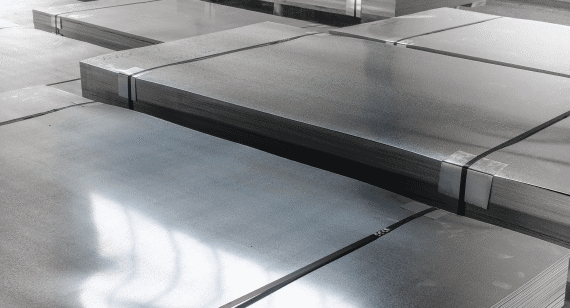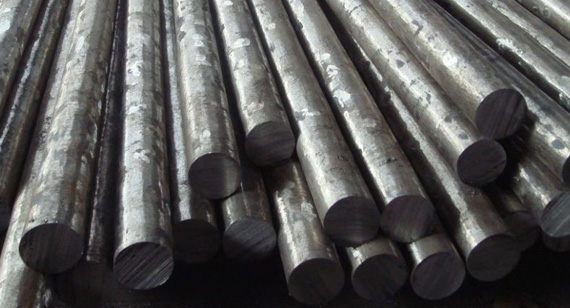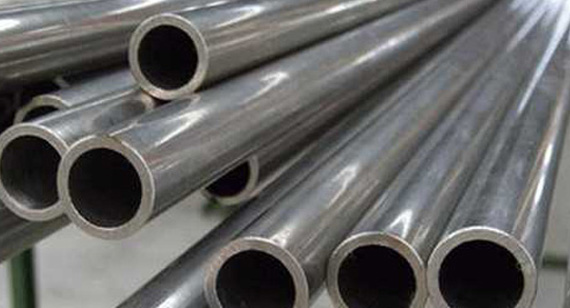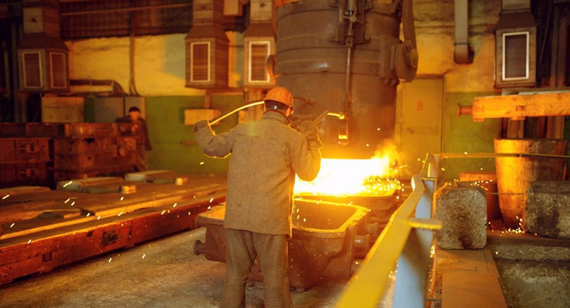15 years one-stop China custom CNC machining parts factory
 262 |
Published by VMT at Jul 30 2024
262 |
Published by VMT at Jul 30 2024
In the field of CNC machining parts manufacturing, selecting the appropriate steel is crucial for ensuring the quality, performance, and durability of the parts. 4140 and 4130 are two commonly used alloy structural steels, each with unique properties and applications. This article will detail the characteristics of these two steels from aspects such as material properties, performance comparison, application scenarios, and selection strategies, providing a comprehensive selection guide for CNC machining parts manufacturers.

The 41xx series steels are a type of chromium alloy steel, classified as martensitic stainless steel. The first digit "4" indicates that it is a chromium steel, while the following digits, such as "10" or "20", generally represent the approximate percentage of chromium content in the steel. These steels are tougher and stronger than ordinary steel. The two types of steel we are comparing, 4140 steel and 4130 steel, fall under the general classification of 41xx steels and other steel types, such as 4340 steel.
4140 steel is a high-strength alloy structural steel widely used in various industries for its excellent mechanical properties and good machinability. It adheres to the ASTM A29/A29M standard, featuring high strength, high hardenability, and excellent toughness, making it an ideal choice for manufacturing high-strength and wear-resistant parts.

High Tensile and Fatigue Strength: The tensile strength of 4140 steel is σb ≥ 1080 MPa, and the yield strength is σs ≥ 930 MPa, demonstrating a very high load-bearing capacity and fatigue resistance.
Hardness and Excellent Ductility: Through heat treatment, 4140 steel can achieve high hardness while maintaining good ductility, allowing it to resist fracture and plastic deformation.
Corrosion Resistance: Although not specifically designed for corrosion resistance, 4140 steel performs well under general environmental conditions.
Machinability: 4140 steel is easy to cut, drill, and mill, with minimal deformation during machining, making it suitable for complex CNC machining operations.
Due to its outstanding performance, 4140 steel is widely used in the manufacture of high-strength and tough parts, such as automotive engine components, oil drilling equipment, heavy machinery parts, and structural components in the aerospace industry.
4130 steel is also an alloy structural steel known for its high strength, high toughness, and good weldability, widely used in various industrial fields. It adheres to the ASTM A29/A29M standard and is a preferred material for manufacturing medium-sized mechanical parts.

Hardness and Tensile Strength: 4130 steel has moderate hardness and high tensile strength, meeting the needs of most industrial applications.
Mechanical Properties: This steel has an excellent modulus of elasticity and shear strength, suitable for parts subjected to complex stresses.
Elasticity and Ductility: 4130 steel maintains high strength while also having good ductility and elasticity, beneficial for the long-term use of parts.
Corrosion and High-Temperature Resistance: 4130 steel has certain corrosion and high-temperature resistance, suitable for special environments.
4130 steel is widely used in the manufacture of shafts, gears, bolts, and other medium-sized mechanical parts, especially suitable for working environments with high-stress conditions. Additionally, it is commonly used in the aerospace, automotive, and motorcycle industries, serving as an important material for making high-strength, lightweight components.
4140 and 4130 steel, as common alloy steels, each have a series of advantages and disadvantages. Here is a detailed supplement of the pros and cons of these two steels:
Advantages of 4140 Steel
High Strength and Toughness: After appropriate heat treatment, 4140 steel has high yield strength and tensile strength while maintaining good toughness, making it ideal for manufacturing high-strength parts and large-section tubes and other stressed components.
Good Hardenability: 4140 steel is a medium-hardenability steel that can achieve good comprehensive mechanical properties, including hardness, strength, and toughness, after heat treatment.
Wear Resistance and Impact Resistance: This steel has good wear resistance and impact resistance, suitable for applications requiring these properties.
Wide Range of Applications: Due to its excellent versatility and practicality, 4140 steel is widely used in the industry, such as for manufacturing horizontal eccentric shafts of horizontal forging machines and crankshafts of forging machines.
Disadvantages of 4140 Steel
Poor Weldability: Compared with some other steels, the weldability of 4140 steel is relatively poor, requiring special welding processes and measures to ensure the quality of the welded joints.
Higher Cost: Due to its superior performance, the manufacturing cost and price of 4140 steel are relatively high, which may increase the total cost of the product.
Advantages of 4130 Steel
High Strength and Toughness: 4130 steel also has high yield strength and tensile strength, as well as good toughness, making it suitable for many high-strength and good-toughness applications such as aerospace, automotive, and motorcycle parts.
Good Weldability: Compared with 4140 steel, 4130 steel has better weldability and can be welded using common welding methods such as arc welding and argon arc welding, with high weld joint strength and less likely to produce cracks.
Easy Machinability: 4130 steel is easy to machine and can be cut, punched, forged, and surface treated in various ways. This allows manufacturers to produce complex parts and structures at lower costs and in less time.
Corrosion Resistance: Under general environmental conditions, 4130 steel has good corrosion resistance and can resist corrosion effects in the atmosphere, water, and soil.
Disadvantages of 4130 Steel
Heavier Weight: Compared with some other materials, 4130 steel has a higher density and therefore is heavier. It may not be suitable for applications with strict weight requirements.
Cost Considerations: Although its performance is excellent, the relatively high cost is also a factor that needs to be considered.
In summary, 4140 and 4130 steel each have their unique advantages and disadvantages. When choosing which steel to use, it is necessary to comprehensively consider specific application scenarios and needs.
Element Composition
4140 and 4130 steel differ in their element compositions, mainly in the content of alloy elements such as chromium and molybdenum. These differences result in slight performance variations between the two.
| Chemical composition | 4140 Steel | 4130 Steel |
| Carbon | 0.38%-0.43% | 0.28%-0.33% |
| Chromium | 0.8%-1.1% | 0.8%-1.1% |
| Manganese | 0.75%-1.0% | 0.40%-0.60% |
| Phosphorus | 0.035% (maximum) | 0.035% (maximum) |
| Sulfur | 0.040% (maximum) | 0.040% (maximum) |
| Silicon | 0.15%-0.35% | 0.15%-0.35% |
| Molybdenum | 0.15%-0.25% | 0.15%-0.25% |
Rust Resistance
Both have certain rust resistance under normal environmental conditions, though neither is specifically designed for rust resistance. For situations requiring higher rust resistance, special rust-proofing measures are recommended.
Heat Treatment
Both steels can be optimized through heat treatment processes such as annealing, quenching, and tempering to obtain different mechanical properties and structures.
Mechanical Properties
Strength and Toughness: 4140 steel is slightly superior to 4130 steel in strength and toughness, especially under high-stress conditions, making 4140 steel more suitable for manufacturing parts subjected to high loads and complex stresses.
Machinability: Both have good machinability, but 4140 steel exhibits less machining deformation, making it more suitable for precision machining.
Weldability: 4130 steel has better weldability than 4140 steel due to its lower carbon content, reducing the risk of welding cracks. However, with appropriate welding processes and preheating measures, 4140 steel can also achieve good welding results.
Applications: There is some overlap in application areas, but 4140 steel is more inclined to high-strength and high-wear applications, while 4130 steel is more suitable for medium-sized mechanical parts and applications requiring good weldability.
Element Composition
Choose the appropriate element composition according to the specific requirements of the parts. If higher strength and toughness are needed, 4140 steel can be selected. If weldability and cost-effectiveness are more important, 4130 steel can be considered.
Mechanical Properties
When choosing steel, mechanical properties are key considerations. Analyze the required tensile strength, yield strength, toughness, and fatigue strength based on the parts' usage environment and stress conditions. For parts that need to withstand high stress and complex loads, 4140 steel is the preferred choice due to its excellent mechanical properties. For parts with moderate strength requirements, 4130 steel offers sufficient strength and good economy.
Weldability
If welding is involved in the parts' design, weldability is a crucial factor. Due to its lower carbon content and good weldability, 4130 steel is usually easier to weld, reducing the risk of welding cracks. However, with proper preheating and post-weld heat treatment measures, 4140 steel can also achieve satisfactory welding results but may require higher process requirements and cost input.
Material Availability
Consider material availability and delivery cycle when choosing steel. The supply situation of 4140 and 4130 steel may vary by region and supplier. Therefore, selecting easily obtainable steel with a short delivery cycle helps ensure production progress and cost control.
Machinability
In CNC machining, material machinability directly relates to machining efficiency and product quality. Both 4140 and 4130 steel have good machinability, but their specific performance may vary due to material state, machining parameters, and tool selection. When selecting steel, fully consider machining needs and existing machining capabilities to choose the most suitable steel to optimize machining efficiency and product quality.
Confirm Heat Treatment Requirements
Heat treatment is crucial for improving the mechanical properties and microstructure of steel. When selecting steel, clarify the required heat treatment processes, including annealing, quenching, and tempering process parameters and procedures. This helps ensure the steel achieves optimal performance during machining and use.
Consider Cost
Cost is an important factor when choosing steel. Although 4140 steel may have slightly better performance than 4130 steel, its cost may also be relatively high. Therefore, select suitable steel based on budget constraints and parts' actual needs to achieve the best cost-performance ratio.
Conclusion
In summary, choosing between 4140 and 4130 steel depends on specific parts' performance requirements and application scenarios. 4140 steel excels in high strength and toughness, suitable for parts subjected to high stress and wear. 4130 steel offers better weldability and moderate strength, suitable for medium-sized mechanical parts and welding applications. When selecting, comprehensively consider various factors such as mechanical properties, weldability, material availability, machinability, heat treatment requirements, and cost, to ensure optimal performance and economy for CNC machining parts manufacturing.

Cold Working/Strain Hardening
During cold working, steel undergoes strain hardening, meaning that as the degree of deformation increases, the hardness and strength of the material increase, but ductility decreases. For 4140 and 4130 steel, appropriate cold working can enhance their hardness and strength, but it's important to control the deformation to avoid excessive hardening, which could lead to machining difficulties or reduced performance.
Annealing
Annealing is a heat treatment process where steel is heated to a certain temperature and then slowly cooled to remove residual stress and structural defects, improving its machinability and subsequent heat treatment results. For 4140 and 4130 steel, annealing is an essential step to improve machinability and ensure the quality of subsequent heat treatments.
Tempering and Quenching
Quenching involves heating steel to the austenitizing temperature and then rapidly cooling it to room temperature or lower to obtain a high-hardness and high-strength martensitic structure. However, quenched steel often has high brittleness, which needs to be reduced through tempering, a process that improves toughness and stability. For 4140 and 4130 steel, a proper combination of quenching and tempering can achieve ideal mechanical properties and microstructure.
Normalizing
Normalizing (also known as air cooling) is a heat treatment process where steel is heated to just below the austenitizing temperature and then air-cooled. It aims to refine the grain structure, eliminate structural defects, and improve mechanical properties. For certain applications, normalizing can be an effective heat treatment for 4140 and 4130 steel.
4140 CNC Machining Parts
Due to its high strength, high toughness, and good machinability, 4140 steel is widely used in CNC machining. It is especially advantageous for manufacturing components that need to withstand high stress and complex loads, such as automotive engine parts and aerospace structural components.
4130 CNC Machining Parts
4130 steel is also suitable for CNC machining, particularly where good weldability and cost-effectiveness are required. It is commonly used to manufacture medium-sized mechanical parts such as shafts, gears, and bolts, as well as equipment components in the petroleum and chemical industries. CNC machining technology allows precise control of the dimensions and shape accuracy of 4130 steel parts, meeting various complex design requirements.
As a professional CNC machining factory, VMT is dedicated to providing customers with high-quality 4140 and 4130 steel machining services. We have advanced CNC machining equipment and a professional technical team, offering a one-stop solution from material selection and process design to finished product delivery. Whether it's custom CNC machining or CNC prototype machining services, VMT can meet customer needs with exceptional quality and efficient service.

In summary, 4140 and 4130 steels each have their advantages in the field of CNC machining parts manufacturing. The choice depends on specific application requirements, performance needs, machining costs, and material availability. 4140 steel excels in manufacturing high-demand, high-load components due to its high strength, high toughness, and good machinability, such as critical automotive parts and aerospace structural components. In contrast, 4130 steel, with its moderate mechanical properties, good weldability, and cost-effectiveness, is widely used in manufacturing medium-sized mechanical parts and petroleum drilling equipment.
In CNC machining, selecting the appropriate steel and optimizing the heat treatment process is crucial for improving part quality, extending service life, and reducing production costs. Manufacturers should thoroughly understand the performance characteristics and application ranges of each steel type and consider specific needs comprehensively to ensure the selection of the most suitable steel material.
Moreover, with the continuous advancement of CNC machining technology and the increase in automation, the requirements for machining precision, surface quality, and consistency of steel are becoming higher. Therefore, when choosing a steel supplier, manufacturers should also focus on the supplier's production capacity, quality control system, and after-sales service to ensure high-quality steel materials and stable supply.
Lastly, VMT, as a professional CNC machining service provider, is committed to offering high-quality 4140 and 4130 steel machining services. We possess advanced machining equipment, sophisticated process technology, and extensive industry experience, providing comprehensive services from design and machining to inspection. Whether it's custom CNC machining parts or CNC prototypes, we can meet customer needs with efficient, precise, and reliable service, helping customers stand out in the competitive market.
What is the difference between 4130 and 4140?
4130 and 4140 steels differ in chemical composition, mechanical properties, and application fields. 4140 steel contains higher chromium and molybdenum content, offering higher strength and toughness, making it suitable for high-strength applications. In contrast, 4130 steel has better weldability and moderate mechanical properties, making it ideal for welding-required medium-sized mechanical parts.
What type of steel is 4140?
4140 is a low-alloy high-strength structural steel with excellent mechanical properties and machinability. It is widely used in manufacturing high-strength, high-wear-resistance, and tough parts, such as automotive engine components and petroleum drilling equipment.
Which is better, 4140 steel or 4130 steel?
There is no absolute "better" steel; the choice depends on specific application needs. 4140 steel has higher strength and toughness than 4130 steel, making it suitable for high-strength requirements. In contrast, 4130 steel has better weldability and cost-effectiveness, suitable for welding and cost-controlled applications.
Does 4140 steel rust?
4140 steel is not specifically designed for rust resistance but has good corrosion resistance in general environments. In humid or corrosive environments, it is recommended to apply appropriate rust prevention measures, such as painting or galvanizing, to extend its service life.
Is 4140 stronger than 4130?
In most cases, 4140 steel indeed has higher strength and toughness than 4130 steel. However, this also depends on the specific heat treatment process and part design. Therefore, when selecting steel, consider various factors comprehensively to ensure meeting performance requirements.
Which steel is harder than 4140?
The specific steel harder than 4140 depends on its chemical composition, heat treatment process, and usage state. Some high-alloy steels or steels with special heat treatments may have higher hardness than 4140.
What is equivalent to 4130 steel?
4130 steel has similarities in performance and application to certain other alloy structural steels, but it cannot be simply equated to one specific steel. Each steel type has its unique chemical composition, mechanical properties, and application areas.
What is the difference between 4130 steel and low-carbon steel?
4130 is an alloy structural steel containing a certain amount of alloy elements (such as chromium and molybdenum) to improve its mechanical properties and corrosion resistance. Low-carbon steel is characterized by lower carbon content and better weldability, with relatively lower strength and hardness. Therefore, there are significant differences between 4130 and low-carbon steel in performance and application fields.
